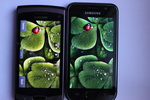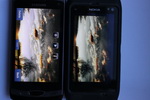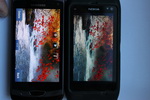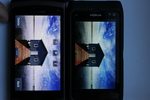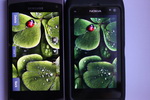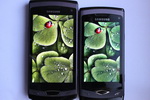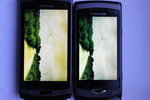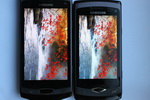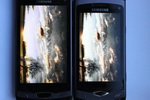|
|
Spillikins #89. Motorola Kissing Russia Goodbye. The End of the Legend
Contents:
- Motorola Closing the Russian Office
- Several Pieces of News from Nokia and the New Model of its Old Smartphone
- Sony Ericsson Quarterly Results
- No Enthusiasm about Windows Phone 7
- Super Clear LCD TFT from Samsung
Motorola Closing the Russian Office
Officially, Motorola brought its phones to Russia 15 years ago. This is a drastic amount of time for the phone market, where over a single year there can happen as many things as during a period of 3-4 years on other, calm markets. It is the company behind the first mobile phone, the first clamshell handset, one that became a token of success in the early 90s and rose in 2005 with the RAZR. Today, it is leaving Russia, which is a result of a pile of problems that Motorola has been experiencing over the recent several years. The top management reshuffle and the unsuccessful model lineup – all led the company to the downfall, that is, the loss of the market, money and people's trust. And these are the global processes that we are talking about, against the background of which the situation in Russia is not that dramatic. After separating the mobile phone business earlier this year, it appeared as if Motorola would start it all over, right from the scratch. We could see the product lineup being revised, emphasis being put on Android and the sales climbing up. In Russia, the company changed the distribution system, bringing its products back to the shelves of the largest retail chain stores and advertisements in magazines. Even the most cautious readers of ours began to talk about the company returning to life and could see the most prominent signs of that. And at that very moment, the company puts an end to all of it. Fin.
Closing the Russian office is no big deal for the global Motorola. Since the beginning of the year, they have been closing the offices in Africa and Europe (e.g. in the Czech Republic, Hungary, Ukraine). Russia is part of the second wave of shutting down local businesses. And that is strange, as the Russian office was not unprofitable but rather covered its expenses and sold some hardware in the meantime, even though the volumes were not that high for the market in general. The big Motorola was not willing to ship its products to Russia, which could be seen by the example of the Milestone and a few other models. The problem was in the operator demand, in particular, in the U.S. market. The rest of the world became of secondary importance. Probably, the new policy is justified by that very concept; large clients come first and local markets only come after that. From the political perspective, this could make sense. You close an office to gain some money and to show that the company starts making profits and that the change is for the good. It is important for the investors as well as for the prospective buyer of the business, or rather the separate company.
The decision appears puzzling because the approach is quite mechanical in its nature. Motorola is not benefiting from destroying its office in Russia in any way. It is only losing. I can understand that localization, production and shipment of phones can be difficult or even ridiculously so as far as Motorola's sales volumes in Russia are concerned. However, the problem is that those volumes are restricted by the company itself since it can't provide the necessary supply.
One can speculate on why Motorola is closing its Russian office all day long. Although Motorola Solutions remains in the country (it is in charge of the walkie-talkie business, for example), it is not the Motorola that most people have in mind when they hear the name. And the consequences of this decision are quite obvious. The company is considering indirect distribution now, which effectively means that it is leaving the Russian market. No distributor will bother with the certification for the Russian market or fight over the shipment quotas with the big Motorola or provide the necessary service support or replace the office for that matter. De-facto, we are not going to see official Motorola phones in Russia anymore. The last shipments will be done over the next few months, which means that the phones will be available on the shelves for some time. After that, they will only be coming through some unofficial channels. It is a pity that we are not going to see the Motorola Milestone 2, the ruggedized Defy and a number of other models.
The warranty service for the existing phones will be provided for the whole duration as promised. The company is not going to leave its customers out in the cold. That doesn't help very much, though.
I feel some personal connection to Motorola; it is one of my favorite makes, to the extent that my line of work allows for that. It may seem to you that its leaving one market shouldn't be taken so close to heart. But in my opinion, it is the beginning of the end and yet another step towards the downfall. Russia was Motorola's fairyland. In 2003, Motorola's market share in Russia enjoyed a phenomenal growth, making the company the market leader.

In 2004, the American company was fighting for the first position with Samsung despite the fact that there were problems in its product lineup.

Later, Motorola suffered a series of setbacks, global failures and lost the market gradually. Russia held its ground till the very end, making the most of existing products and selling all it could. Motorola's indices were falling in Russia not as fast as in the rest of the world. It seemed that the introduction of the Motorola RAZR could be a life buoy which would allow the company to regroup and win back its positions. But it didn't work out. The company's leaving Russia is effectively a declaration of giving up on its future. Betting on the operator market, Motorola forgets that the new partners are volatile and always ready to switch to those who can offer the best price or even sell the hardware at a loss. Motorola is not capable of playing such games; they don't have enough safety margin. A viable option was to bet on improving the brand image on all operator markets, including Russia. But they didn't play that card, which implies that the company doesn't have this opportunity anymore.
Don't get me wrong. Motorola won't disappear over a night; the company has a decent product portfolio and its financial indices are not that bad. Their play, however, is short-sighted, just like that by Sony Ericsson; the difference is in the details. As far as its strategy is concerned, the company is making a clear statement that it is not going to develop its business in the way it was done before; they are cutting down on unnecessary countries by simply leaving them. And that is sad. That is a game without future, a game of survival. It has no potential, which is bad.
It is a pity that Motorola is leaving Russia. I think it is a big mistake. But what's done is done. Farewell Motorola. The legend is gone and is very unlikely to return in shining armor. I would like to say "see you later" but have no faith in its coming back.
While I'm writing this, I can't but keep thinking about Motorola's presence in Russia, about various phone models, both successful and not so. It all wasn't boring; it all was interesting and exciting. Just try to think what the company has been for you personally. Share your opinions with me and other readers on the forum. I would highly appreciate that. I would also like to remind you of the RAZR story, which was a crucial point in the company history, signifying a chain of random events that resulted in its downfall.
Back to the table of contents >>>
Several Pieces of News from Nokia and the New Model of its Old Smartphone
I am the most devoted fan of Nokia N8 and it takes much of my time to understand what an average user will end up with. After the first fortnight I have many minor complaints towards Symbian^3 and Nokia's developers. The upper part of the body started squeaking as it is made of plastic. To avoid allegations in slander once again I will make a video and upload it here. There is nothing crucial in this standard Nokia of recent times as the company makes mistakes even in a candybar build at the development stage. It can happen to anybody.
iSuppli calculated the price of materials in Nokia N8 and its final production cost. They got $187.41 against $187.51 for Apple iPhone 4G 16 GB. It is an interesting story that Apple sells its model for 20% more and leaves this margin in its pocket. Apple not only earns money this way, but suffers from deficit and cannot satisfy a demand. It shows Nokia difficulties in selling its products. After the initial surge of interest Nokia N8 reached an expected level. The sales are good, but there is nothing special.
Returning to the BOM of Nokia N8 I can say that a camera with the flash costs $31.08, but the most expensive part is a screen manufactured by Samsung ($39.25). Do you remember endless discussions in Nokia offices when Nokia N8 easily beat Samsung in terms of screen quality? It was before the model hit the shelves and commercial models suddenly started losing out. It is merely an issue of data manipulation. I do not have any other explanations, because the display supplier remained the same. It is still Samsung, which never sells its last generation components to rivals. The best of the crop goes to their own products, while the rest of the pack has to be content with simpler options. The only question I have is why engage in facts shuffling if after some time you are likely to understand the truth. It happens not only with Nokia N8, but applies to other products in the lineup. I would like to add that ClearBlack is a marketing title of one technology Samsung decided not to use in its phones, because SuperAmoled does not require an additional polarization filter. It is funny to watch these intrigues, which as the market leader believes will never be obvious for the general public. Unfortunately, you cannot keep secrets nowadays, at least for long. Well done Samsung! Even the sales of a Nokia flagship model bring them revenues to be later invested in their own products. It is a very smart approach I should say!
Based on calculations above it is clear that the BOM for Nokia C7 will be not much lower, so Nokia does not have much leeway in terms of price cutting for these models. The company limits itself by the price of the flagship model. What does it mean?
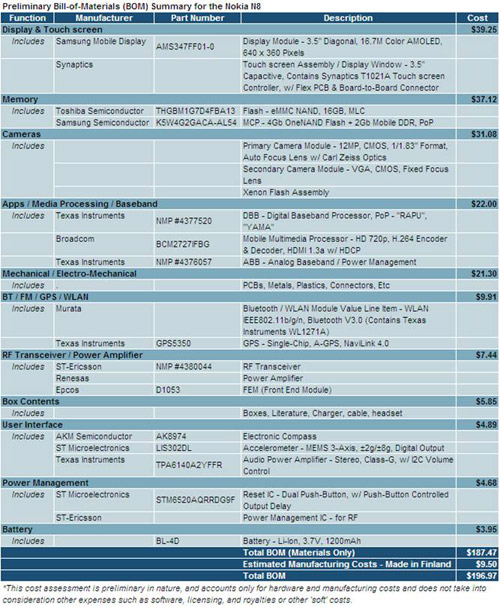
Due to the production costs of Symbian^3 we will see many new/old handsets on Symbian^1. Pay attention to the latest announcement, which took place this week. An inexpensive Nokia C5-03 is built on that platform. On Twitter one Nokia fan surprisingly labeled the introduction of this Symbian^1 product as sabotage. The product has no new ideas and it serves only to expand the model range and keep sales in the smartphones segment. The only viable option for Symbian is aggressive price cutting and attempts to overtake Android. This game has been already lost and users treat Android as a present day leader, while Symbian is languishing as an old hero of yester years. More outdated models will erase the loyalty of Nokia customers. It is so obvious and easy to understand, but something is rotten in the kingdom of Nokia.


Back to the table of contents >>>
Sony Ericsson Quarterly Results
I was looking forward to the quarterly results, which had to confirm my speculation that Sony Ericsson has its market share decreasing due to dwindling sales. It was predetermined by the end of production for several inexpensive А200 models as their replacement was 25-30% more expensive than analogues. Attempts of SE to jump onto the green bandwagon did not help. September saw final shipments of several models, so the remnants were sold at discounted prices and in high quantities. Retailers were more than happy to snap up these models, but did not place serious orders on new models. Weekly wholesale sales of Sony Ericsson saw the decrease of its market share from 4% to 1.5 %. Subsequently, the downfall will be obvious in the final quarter of 2010 and the first quarter of 2011. Russian market was always a litmus test for Sony Ericsson. The boost in Russian sales heralded good sales in Europe and vice versa.
What is happening with the company? The top management has a goal for SE to become the leader in Android segment. The plan is ambitious, but it is impossible to achieve. Basically, Motorola has already taken the US market, which represents the bulk of Android devices sold today. It has good results in Europe through T-Mobile as well. Sony Ericsson has the rest of Europe and Asia, but without the US it cannot become the top dog.
In the 3rd quarter Sony Ericsson lost its market share in volume. The manufacturer claims around 4% worldwide. I have to mention that sales went down 5%in comparison with the second quarter, though traditionally 3rd quarter is a period of growth. The company started selling its smartphones in China and the USA, but even these measures were not enough. The main issue is that the entire portfolio of SE contains only niche models.
Earlier I described the strategy for SE to improve the quality and offer new models when they start making money again. Sadly, it did not happen and investment in R&D continues to go down. For example, its flagship model Sony Ericsson X10 did not get an upgrade from 1.6 to 2.1, which terminates the sales of the model as nobody wants to buy it. When it is finally upgraded to 2.1 the market will be filled with models on 2.3. X10 will not get even a 2.2. upgrade. Surprisingly, it happens to a would-be leader in Android segment.
The model lineup is not balanced enough with the main impetus on Android smartphones, but they are not crowd pullers and lack a flagship. А200 and ODM handsets have inflated prices and are not attractive.
Until SE starts investing into development (they have nothing to invest as they lose money on restructuring) nothing will improve. Below is the chart with corporate results.
| |
Q3 2009 |
Q2 2010 |
Q3 2010 |
| Number of units shipped (million) |
14.1 |
11.0 |
10.4 |
| Sales (Euro m.) |
1,619 |
1,757 |
1,603 |
| Gross margin (%) |
16% |
28% |
30% |
| Operating income (Euro m.) |
-193 |
36 |
63 |
| Operating margin (%) |
-12% |
2% |
4% |
| Restructuring charges (Euro m.) |
2 |
32 |
4 |
| Operating income excl. restructuring charges (Euro m.) |
-191 |
68 |
67 |
| Operating margin excl. restructuring charges (%) |
-12% |
4% |
4% |
| Income before taxes (IBT) (Euro m.) |
-199 |
31 |
62 |
| IBT excl. restructuring charges (Euro m.) |
-198 |
63 |
66 |
| Net income (Euro m.) |
-164 |
12 |
49 |
| Average selling price (Euro) |
114 |
160 |
154 |
Back to the table of contents >>>
No Enthusiasm about Windows Phone 7
The announcement of Windows Phone 7 was meant to boost optimism and emphasize good prospects for the OS, but as I said before the picture looks grim. We were promised that the copy/paste feature will be added at the beginning of 2011, which is great, but it would have been better if it had been present from the outset. We are offered a range of models with similar features. It was so funny that every manufacturer decided to employ figure 7 in models names – Samsung Omnia 7, LG Optimus 7, etc.
Before the announcement all characteristics and options were known, so there was no surprise or revelation. In Russia the models will go on sale in the second part of 2011, so we have nothing to speak about. HTC got so tired answering similar questions that they came up with the press release highlighting that these models are not available in Russia and dates of release depend solely on Microsoft. In the Netherlands models will be launched without the Dutch localization, which is bizarre! I am definitely not impressed.
Unfortunately, Windows Phone 7 will not play a significant role on the market and will remain a niche OS similar to Windows Mobile. Some things never change.
I could not fail to mention Windows Phone 7, but there was nothing new. If there is any news we will return to the topic. At the moment I do not believe that Microsoft can develop it properly.
Back to the table of contents >>>
Super Clear LCD TFT from Samsung
Until I got hold of Wave II I was quite skeptical about the transition from SuperAmoled to Super TFT, labeled by Samsung as Super Clear LCD TFT. I have to admit that the screen impressed me after all. It's a pity, but I did not experience a single sunny day to compare two variants outside. Inside Super Clear TFT offers stunning results and the main difference from SuperAMOLED is that the picture is more acute without offending the eyes. Some may like it, but tastes differ. Test shots reveal preprocessing with the help of DNIe (digital natural image engine), used in Samsung TV sets, which once again was used in phones. Image preprocessing means that the result is the maximum for particular conditions and picture. You will not be impressed if you want a fair picture without any color exaggeration. Having shown test photos from Nokia N8, Samsung Wave and Wave II to a dozen of people we got a clear preference for Wave II, though sometimes respondents chose the other two. It can be a statistical error though. Look at the test photos, they are quite exemplary. Without beating around the bush I can say that the screen is excellent, though it consumes more energy than SuperAMOLED and I cannot say anything about its behavior in the sun.
Samsung Wave II vs Samsung Galaxy S
Samsung Wave II vs Nokia N8
Samsung Wave II vs Samsung Wave



P.S. As always I would like to wish you a good week and be in high spirits. It would be nice to have more sun as well. Take care!
Do you want to talk about this? Please, go to our Forum and let your opinion to be known to the author and everybody else.
Back to the table of contents >>>
Related links
Eldar Murtazin (eldar@mobile-review.com)
 Twitter Twitter  Livejournal Livejournal
Translated by Olexandr Nikolaychuk (meiam@inbox.com), Maxim Antonenko (maxantonenko@ukr.net)
Published — 18 October 2010
Have something to add?! Write us... eldar@mobile-review.com
|
News:
[ 31-07 16:21 ]Sir Jony Ive: Apple Isn't In It For The Money
[ 31-07 13:34 ]Video: Nokia Designer Interviews
[ 31-07 13:10 ]RIM To Layoff 3,000 More Employees
[ 30-07 20:59 ]Video: iPhone 5 Housing Shown Off
[ 30-07 19:12 ]Android Fortunes Decline In U.S.
[ 25-07 16:18 ]Why Apple Is Suing Samsung?
[ 25-07 15:53 ]A Few Choice Quotes About Apple ... By Samsung
[ 23-07 20:25 ]Russian iOS Hacker Calls It A Day
[ 23-07 17:40 ]Video: It's Still Not Out, But Galaxy Note 10.1 Gets An Ad
[ 19-07 19:10 ]Another Loss For Nokia: $1 Billion Down In Q2
[ 19-07 17:22 ]British Judge Orders Apple To Run Ads Saying Samsung Did Not Copy Them
[ 19-07 16:57 ]iPhone 5 To Feature Nano-SIM Cards
[ 18-07 14:20 ]What The iPad Could Have Looked Like ...
[ 18-07 13:25 ]App Store Hack Is Still Going Strong Despite Apple's Best Efforts
[ 13-07 12:34 ]Infographic: The (Hypothetical) Sale Of RIM
[ 13-07 11:10 ]Video: iPhone Hacker Makes In-App Purchases Free
[ 12-07 19:50 ]iPhone 5 Images Leak Again
[ 12-07 17:51 ]Android Takes 50%+ Of U.S. And Europe
[ 11-07 16:02 ]Apple Involved In 60% Of Patent Suits
[ 11-07 13:14 ]Video: Kindle Fire Gets A Jelly Bean
Subscribe
|






